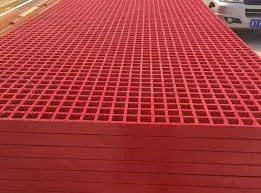
-
 Afrikaans
Afrikaans -
 Albanian
Albanian -
 Amharic
Amharic -
 Arabic
Arabic -
 Armenian
Armenian -
 Azerbaijani
Azerbaijani -
 Basque
Basque -
 Belarusian
Belarusian -
 Bengali
Bengali -
 Bosnian
Bosnian -
 Bulgarian
Bulgarian -
 Catalan
Catalan -
 Cebuano
Cebuano -
 China
China -
 China (Taiwan)
China (Taiwan) -
 Corsican
Corsican -
 Croatian
Croatian -
 Czech
Czech -
 Danish
Danish -
 Dutch
Dutch -
 English
English -
 Esperanto
Esperanto -
 Estonian
Estonian -
 Finnish
Finnish -
 French
French -
 Frisian
Frisian -
 Galician
Galician -
 Georgian
Georgian -
 German
German -
 Greek
Greek -
 Gujarati
Gujarati -
 Haitian Creole
Haitian Creole -
 hausa
hausa -
 hawaiian
hawaiian -
 Hebrew
Hebrew -
 Hindi
Hindi -
 Miao
Miao -
 Hungarian
Hungarian -
 Icelandic
Icelandic -
 igbo
igbo -
 Indonesian
Indonesian -
 irish
irish -
 Italian
Italian -
 Japanese
Japanese -
 Javanese
Javanese -
 Kannada
Kannada -
 kazakh
kazakh -
 Khmer
Khmer -
 Rwandese
Rwandese -
 Korean
Korean -
 Kurdish
Kurdish -
 Kyrgyz
Kyrgyz -
 Lao
Lao -
 Latin
Latin -
 Latvian
Latvian -
 Lithuanian
Lithuanian -
 Luxembourgish
Luxembourgish -
 Macedonian
Macedonian -
 Malgashi
Malgashi -
 Malay
Malay -
 Malayalam
Malayalam -
 Maltese
Maltese -
 Maori
Maori -
 Marathi
Marathi -
 Mongolian
Mongolian -
 Myanmar
Myanmar -
 Nepali
Nepali -
 Norwegian
Norwegian -
 Norwegian
Norwegian -
 Occitan
Occitan -
 Pashto
Pashto -
 Persian
Persian -
 Polish
Polish -
 Portuguese
Portuguese -
 Punjabi
Punjabi -
 Romanian
Romanian -
 Russian
Russian -
 Samoan
Samoan -
 Scottish Gaelic
Scottish Gaelic -
 Serbian
Serbian -
 Sesotho
Sesotho -
 Shona
Shona -
 Sindhi
Sindhi -
 Sinhala
Sinhala -
 Slovak
Slovak -
 Slovenian
Slovenian -
 Somali
Somali -
 Spanish
Spanish -
 Sundanese
Sundanese -
 Swahili
Swahili -
 Swedish
Swedish -
 Tagalog
Tagalog -
 Tajik
Tajik -
 Tamil
Tamil -
 Tatar
Tatar -
 Telugu
Telugu -
 Thai
Thai -
 Turkish
Turkish -
 Turkmen
Turkmen -
 Ukrainian
Ukrainian -
 Urdu
Urdu -
 Uighur
Uighur -
 Uzbek
Uzbek -
 Vietnamese
Vietnamese -
 Welsh
Welsh -
 Bantu
Bantu -
 Yiddish
Yiddish -
 Yoruba
Yoruba -
 Zulu
Zulu
Exploring the Future of Affordable Housing through Innovative Frp Solutions
Exploring FRP Housing A Sustainable Future for Construction
In recent years, the construction industry has faced numerous challenges, including rising material costs, environmental concerns, and the urgent need for sustainable solutions. One innovative approach that has been gaining traction is the use of Fiber Reinforced Polymer (FRP) in housing. FRP offers a range of benefits that can revolutionize the way we think about building materials and construction processes.
FRP is a composite material made from a polymer matrix reinforced with fibers, typically glass, carbon, or aramid. The strategic combination of these materials results in a lightweight yet extremely strong product that can be molded into various shapes. This flexibility makes FRP an ideal candidate for housing applications, as it can be used to create customized designs while maintaining structural integrity.
Exploring FRP Housing A Sustainable Future for Construction
Furthermore, FRP is highly resistant to environmental factors such as corrosion, moisture, and UV exposure. Unlike conventional materials that may degrade over time, FRP is designed to withstand harsh conditions, making it an excellent choice for regions prone to extreme weather. For instance, homes built with FRP can endure flooding, heavy rainfall, and high humidity without succumbing to damage, thus providing a long-lasting housing solution.
frp housing

Additionally, the sustainability aspect of FRP cannot be overstated. The production process of FRP typically involves less energy compared to traditional materials, leading to a lower carbon footprint. Moreover, FRP itself is recyclable, allowing for a circular economy in the construction sector. As the world shifts towards greener practices, the demand for sustainable materials like FRP is expected to rise.
Another key advantage of FRP housing is its rapid construction time. The prefabrication of FRP components allows for quicker assembly on-site, significantly reducing overall construction timelines. This efficiency is particularly beneficial in addressing housing shortages and responding to emergencies, such as natural disasters where swift rebuilding is essential.
However, it’s important to note that the adoption of FRP housing also faces some challenges. The initial cost of FRP materials can be higher than traditional options, which may deter some builders and homeowners. Additionally, there is a need for further research and development to optimize these materials for various climates and applications.
In conclusion, FRP housing presents a promising solution to many of the challenges currently faced by the construction industry. Its combination of strength, lightweight properties, durability, and sustainability positions it as a viable alternative to traditional building materials. As more builders and architects explore the potential of FRP, we could witness a significant transformation in how we approach housing, paving the way for a more sustainable and efficient future in construction. With continuous advancements and a better understanding of this innovative material, the dream of sustainable living spaces may soon become a reality for many.









